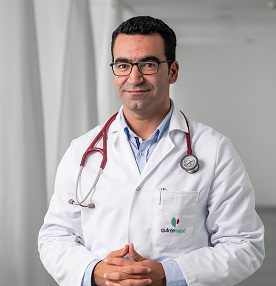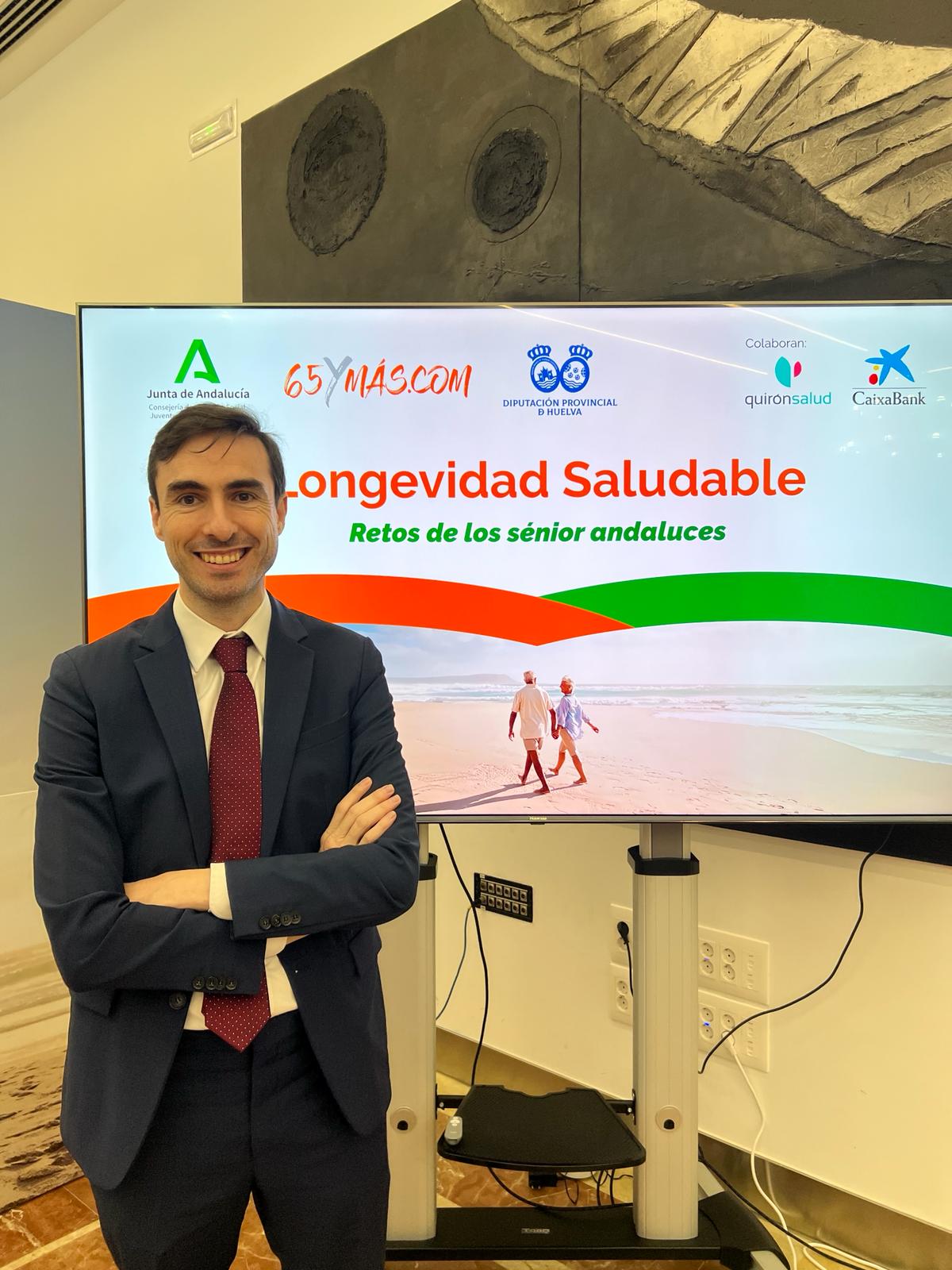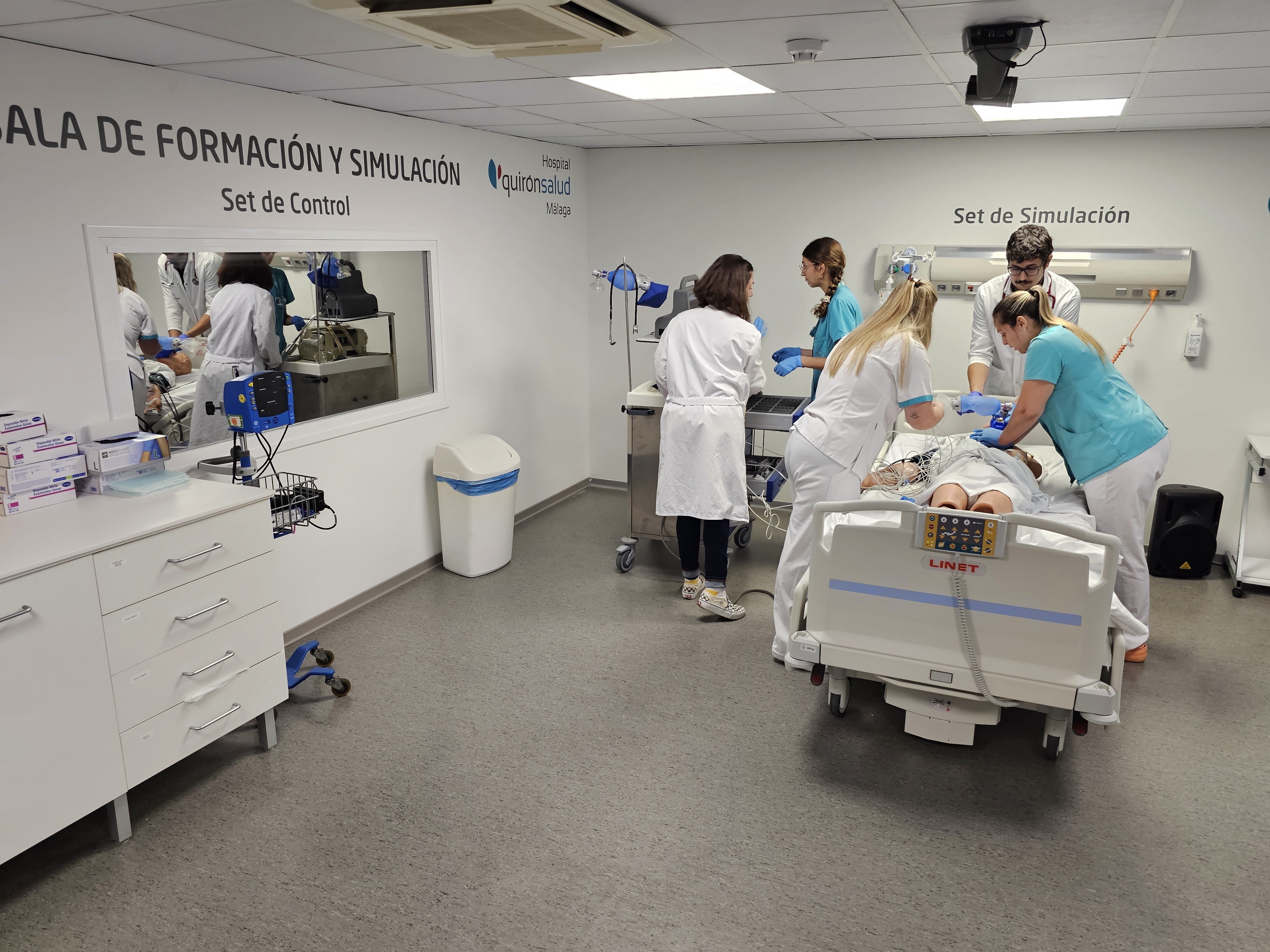The Recent Cold Front increases Visits to Paediatric A & E due to Bronchiolitis
The recent cold front has made bronchiolitis the most common motive for consultation in children under two and infants arriving at Accident and Emergency. "The symptoms of this infection may vary greatly," explains Doctor Adalgisa de Caro, Paediatrician at Hospital Quirónsalud Murcia, "and usually start with a cold, nasal mucus, coughing and, sometimes, fever. After one or two days, the couch worsens and the child’s breathing becomes more agitated. Some of them may also experience difficulty breathing and have sounds in their chest, such as whistling or wheezing." This type of virus has a seasonal pattern, presenting during the cold months of the year, in particular during cold fronts, such as the one we experienced last year.
Infants under six months, and those that were born prematurely, are at greater risk of coming down with severe bronchiolitis, or requiring hospital treatment, "as are babies with severe heart or lung conditions, such as cystic fibrosis or bronchio-pulmonary dysplasia, and those with immune system deficiencies," states Doctor De Caro.
Its transmission mechanism is from person to person, due to which the child should not be in contact with family members who have a respiratory infection or a cold. "If this is not possible, avoid coughing close to the child, and wash your hands with soap and water before picking him or her up. You should also avoid crowds, like those at shopping centres or day care centres," suggests Doctor Maria Ángeles Martín, Paediatrician at del Hospital Quirónsalud Valencia. Another factor that favours infection, and that can worsen its evolution, is tobacco smoke, due to which we advise not smoking close to minors.
The natural course of bronchiolitis can last between 7 and 10 days. "But it is between the second and third day when things can tale a turn for the worse," indicates Doctor Martín, "which is why it is very important for parents and caretakers to know how to recognize the signs and symptoms of breathing difficulties that should alert them to go to a healthcare centre."
Treatment Advice
As this pathology has a viral origin, there is no specific or curative treatment. "The objective of the treatment is to control the symptoms through measures such as nasal flushing with saline solution, sleeping in a semi-seated position, and avoiding contact with tobacco smoke," advises Doctor De Caro.
This infection usually includes a fever, due to which anti-febrile medications, such as paracetamol, can be given to alleviate it. "Sometimes bronchodilators are indicated, though their use for bronchiolitis is very controversial, since their efficacy has not been proven in most cases. Depending on the clinical characteristics and the age of the child, the paediatrician may try salbutamol and, in case of a positive response, prescribe it for treatment; otherwise, he or she will recommend all the aforementioned measures, and periodic follow-ups to monitor the child’s evolution," specifies the specialist from Hospital Quirónsalud Valencia, Maria Ángeles Martín.
This respiratory infection requires stricter monitoring in infants under six months and, in particular, in those under three months, since they are at greater risk of developing complications.
Current events
Current events
- 19 de abril de 2024
‘El hígado graso metabólico debe ser controlado por sus múltiples factores de riesgo’
• Quirónsalud Huelva, con la incorporación del doctor Francisco Reina Solano, refuerza el equipo médico especializado en su estudio y tratamiento.Hospital Quirónsalud HuelvaAparato Digestivo - 18 de abril de 2024
Quirónsalud, Healthcare Partner del Mutua Madrid Open de tenis
Las mejores raquetas del tenis mundial se dan cita en este torneo, que se disputa en la Caja Mágica del 22 de abril al 5 de mayo.Quirónsalud - 10 de mayo de 2024
III VENOUS SUMMIT CCEV 2024 Endovascular Surgery Chapter
3ª del VENOUS SUMMIT del CCEV En esta 3ª edición, que se celebrará los próximos 10 y 11 de mayo de 2024, mantendremos el formato horario de comenzar ese viernes a media mañan...Hospital Quirónsalud MálagaAngiología y Cirugía Vascular - 25 de abril de 2024
II Reunión Nacional Multidisciplinar de Innovación en Cáncer
JUEVES 25 DE ABRIL 15.30-16.30H Entrega de documentación.16.30-16.45H Bienvenida y presentación. Dr. Jorge Contreras Martínez / Dr. Manuel Cobo Dols / Dr. Tomás Urda Valcárc...Hospital Quirónsalud MálagaOncología Médica - 17 de abril de 2024
El Hospital Universitario Rey Juan Carlos implantará el programa MAIC Continuum para mejorar la transición...
El 3-5% de los ingresos hospitalarios en España son debidos a la insuficiencia cardiaca, primera causa de hospitalización en mayores de 65 años en España Más de 20 hospitales...Hospital Universitario Rey Juan Carlos - 17 de abril de 2024
El Hospital Universitario Infanta Elena implantará el programa MAIC Continuum para mejorar la transición...
El 3-5% de los ingresos hospitalarios en España son debidos a la insuficiencia cardiaca, primera causa de hospitalización en mayores de 65 años en España Más de 20 hospitales...Hospital Universitario Infanta Elena - 17 de abril de 2024
El Hospital Universitario General de Villalba implantará el programa MAIC Continuum para mejorar la transición...
El 3-5% de los ingresos hospitalarios en España son debidos a la insuficiencia cardiaca, primera causa de hospitalización en mayores de 65 años en España Más de 20 hospitales...Hospital Universitario General de Villalba - 17 de abril de 2024
El doctor Héctor Meijide, organiza la II Reunión del grupo de asistencia compartida e interconsultas...
El encuentro médico, abordará la asistencia compartida entre cirujanos e internistas en el proceso de la cirugía abdominal mayor, de colon y hepatobiliopancreáticaHospital Quirónsalud A CoruñaMedicina Interna - 17 de abril de 2024
Un equipo del CNIC identifica dianas terapéuticas para prevenir el daño cardiaco asociado a una terapia...
La investigación está liderada por el Dr. Borja Ibáñez, director científico del Centro Nacional de Investigaciones Cardiovasculares (CNIC), cardiólogo intervencionista en la ...Hospital Universitario Fundación Jiménez Díaz - 16 de abril de 2024
Los expertos del Hospital Universitario General de Villalba recomiendan fomentar las conversaciones sobre...
El hospital ha celebrado dos jornadas de prevención del suicidio en la adolescencia dirigidas a estudiantes de Educación SecundariaHospital Universitario General de Villalba - 16 de abril de 2024
Un estudio liderado por el CSIC con participación del IIS-FJD halla una combinación de fármacos eficaz...
La investigación se ha publicado en la revista científica British Journal of PharmacologyHospital Universitario Fundación Jiménez Díaz - 19 de abril de 2024
El Hospital Quirónsalud Badalona cumple seis meses de actividad alcanzando 54.550 actos médicos
La excelencia en la experiencia del paciente es el eje central que se aplica en todo proceso y gestión del centro.Hospital Quirónsalud Badalona - 16 de abril de 2024
La Teledermatología llega al Centre Mèdic Quirónsalud Aribau para acelerar el diagnóstico dermatológico
El nuevo servicio agiliza la atención y respuesta médica, en 48 horas, posibilitando una actuación rápida sobre las lesiones que presenten indicios de malignidad.Centre Mèdic Quirónsalud Aribau - 15 de abril de 2024
El doctor Guillermo Isasti participa en la mesa redonda 'Longevidad Saludable' organizada por 65ymás
Celebrada en la Diputación Provincial de HuelvaHospital Quirónsalud Huelva - 16 de abril de 2024
La Sala de Simulación de Quirónsalud Málaga, acreditada por la Sociedad Española de Simulación Clínica...
La formación de habilidades y training por equipos es una de las estrategias más exitosas para avanzar en seguridad y experiencia de paciente, desarrollo de competencias prof...Hospital Quirónsalud Málaga











